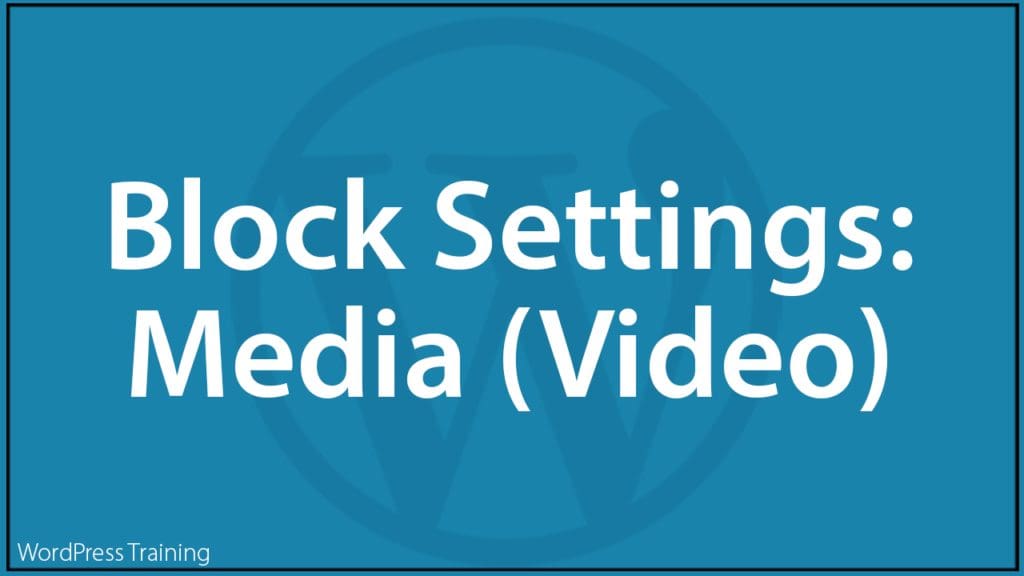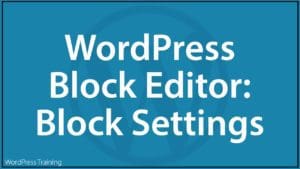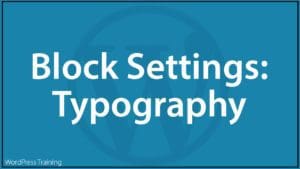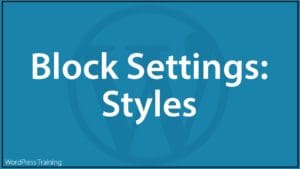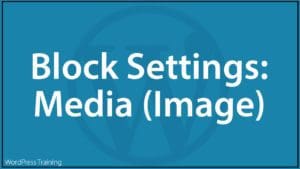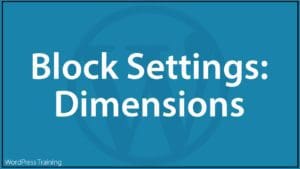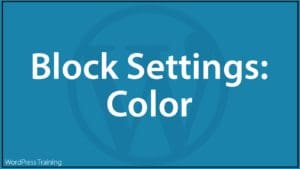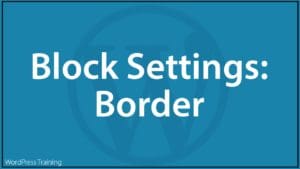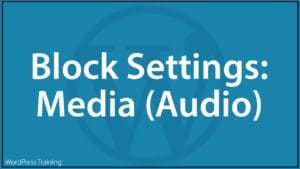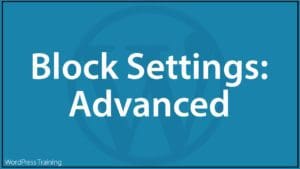WordPress Block Editor – Block Settings: Video
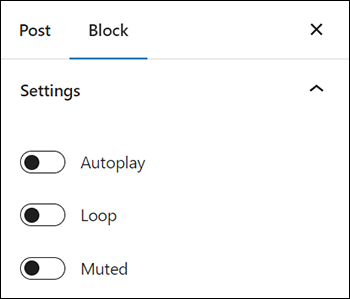 This tutorial is part of our series on using common block settings in the WordPress Block Editor Settings Section.
This tutorial is part of our series on using common block settings in the WordPress Block Editor Settings Section.
In this tutorial, you will learn how to customize a block’s video settings and properties.
For a complete understanding of how to use the WordPress Block Editor, see the other tutorials in this series:
- WordPress Block Editor: Block Settings
- How To Use The WordPress Block Settings Section
- How To Use WordPress Blocks
***
Block Settings – Video
Some types of blocks allow you to customize and edit their video settings and options.
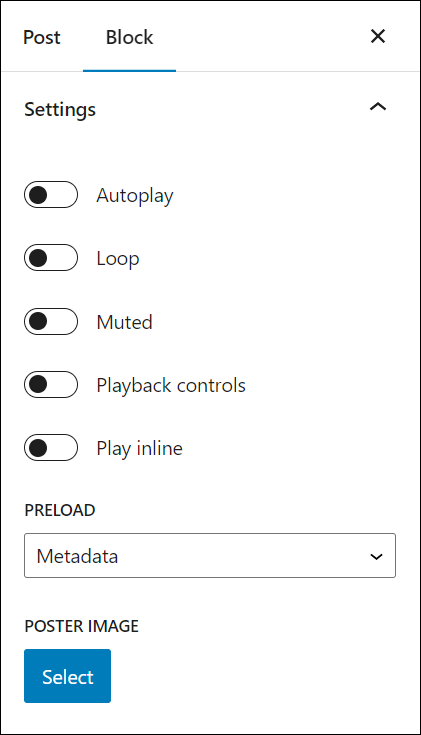
![]()
Note: Block types that support video properties must be selected in the content editor area to display the settings in the Block Settings panel.
Note: A block’s video settings may include additional options depending on which type of block you are using and what plugins and themes are installed on your site.
If you need help using block settings, see this tutorial: WordPress Block Editor: Block Settings
Video Options
Here are the default settings and options available for blocks that support videos:
Video Settings
- Autoplay (on/off) – Begin playing your video automatically when someone visits your page or post (i.e. when the page is loaded in the visitor’s browser).
- Loop (on/off) – Video repeats after it’s been played. If set to ‘on’, the video will keep looping after initial playback.
- Muted (on/off) – Mute the video soundtrack.
- Playback Controls (on/off) – Display or hide your video playback controls.
- Play inline (on/off) – Set your video to be played within the element’s playback area. Note: turning this setting to ‘off’ doesn’t imply that your video will always play in fullscreen mode.
You can turn the above video settings on or off by switching the toggle for that function.
For example, switching on Playback controls displays video controls to users.
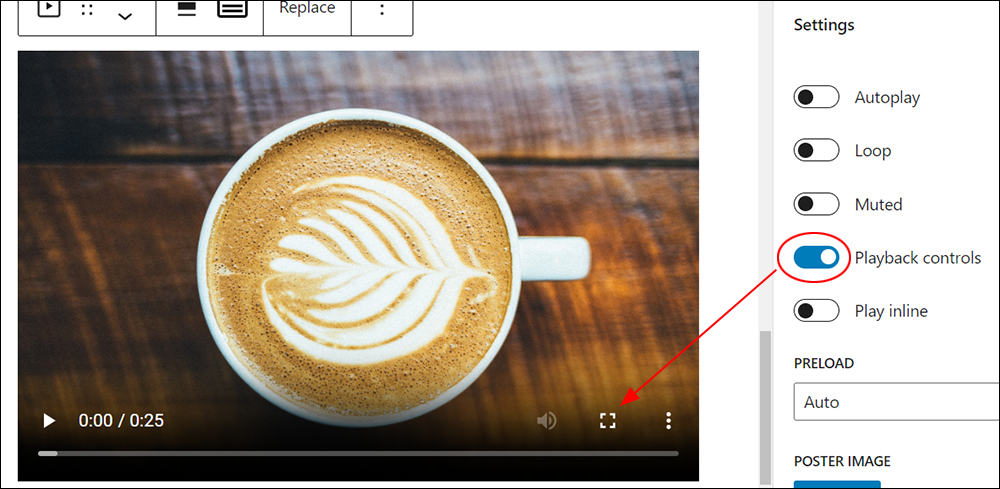
You can live preview some changes to settings when you switch the feature on or off.
With other features, you will need to save or publish your post or page and view the page on your website to see the feature in action.
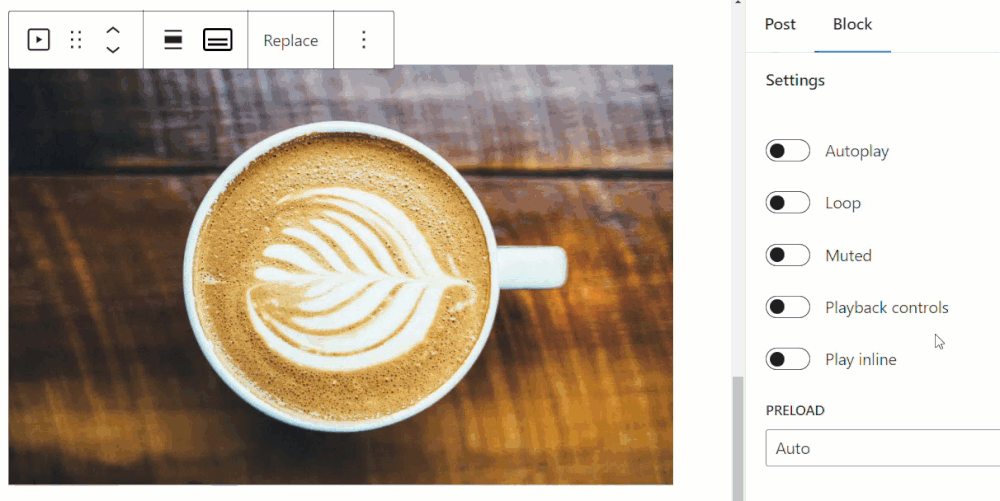
Preload
This section lets you specify how much of the video file is preloaded (downloaded automatically) when the page or post is loaded.
Note: having the whole file download automatically can slow down your page’s load speed.
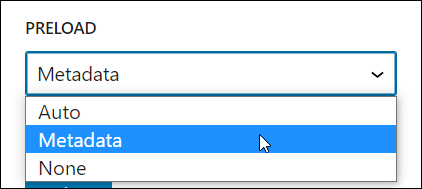
Here are the settings you can choose from:
- Auto – This downloads the entire video file as soon as the page loads, regardless of whether the visitor clicks the Play button or not. Note: this setting has the biggest impact on your page or post’s load speed, especially with larger video files.
- Metadata – Only basic info about your video file is preloaded: dimensions, first frame, tracklist, duration, etc. Like the None option, your video file only begins downloading when someone clicks the Play button. This setting is very fast, as the only thing downloaded is text.
- None – No video preloading takes place automatically. Your video file only begins downloading when someone clicks Play. This is the fastest setting. Note: there’s not much difference between selecting Metadata and None.
Poster Image
Poster Image lets you select an image thumbnail for your video block.
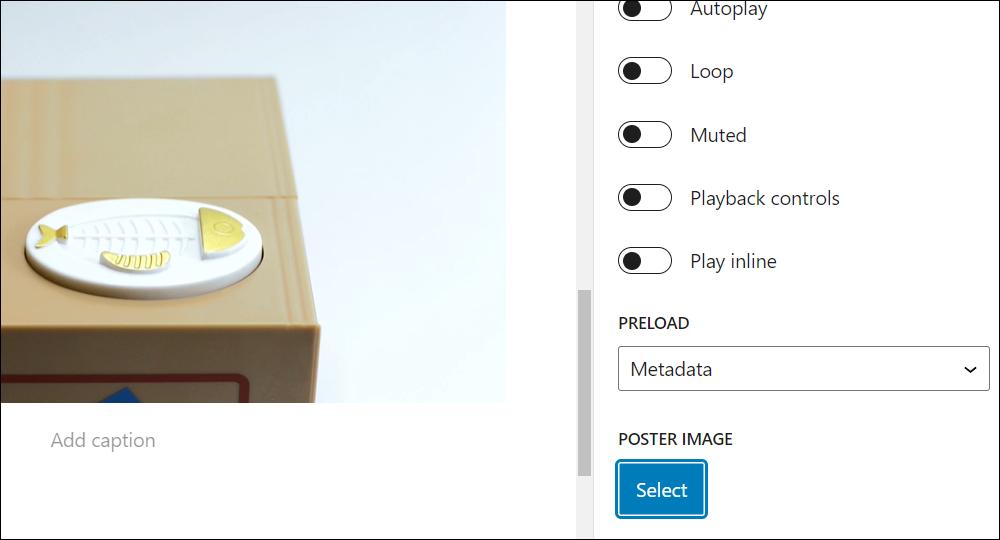
Click on the Poster Image > Select button…
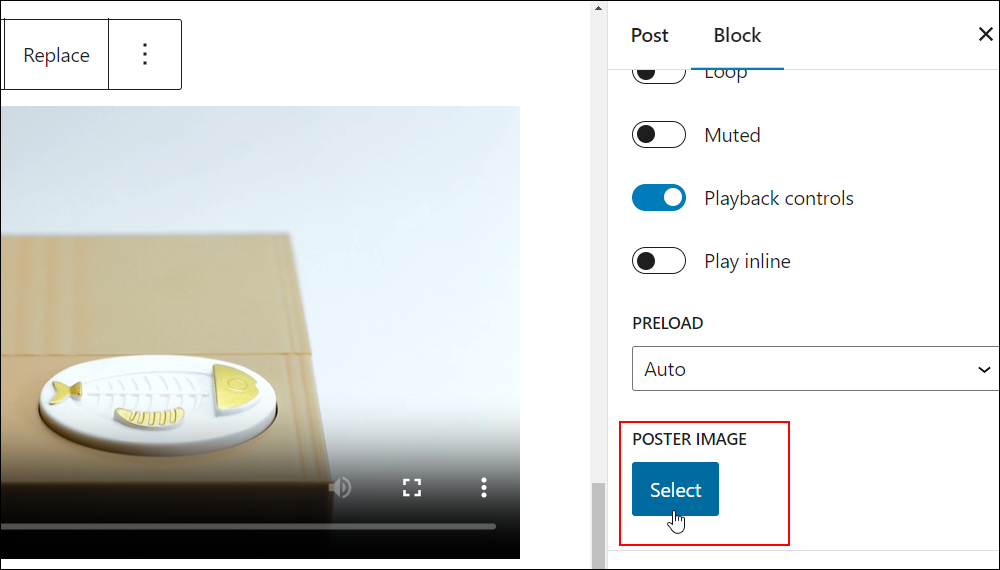
Select an image for your video by uploading a file or picking an existing image from the media library…
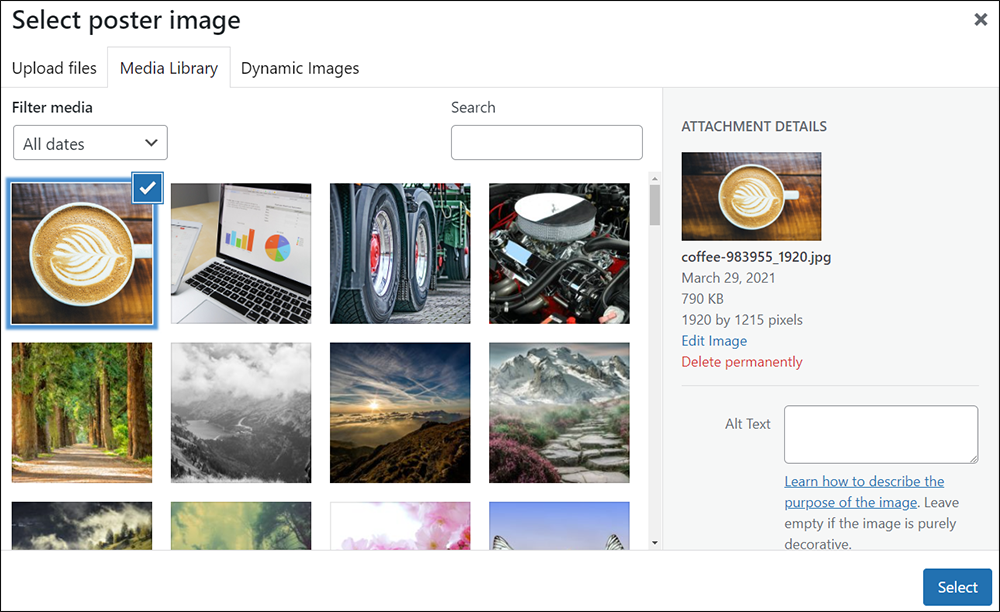
The poster image will be added to your video.
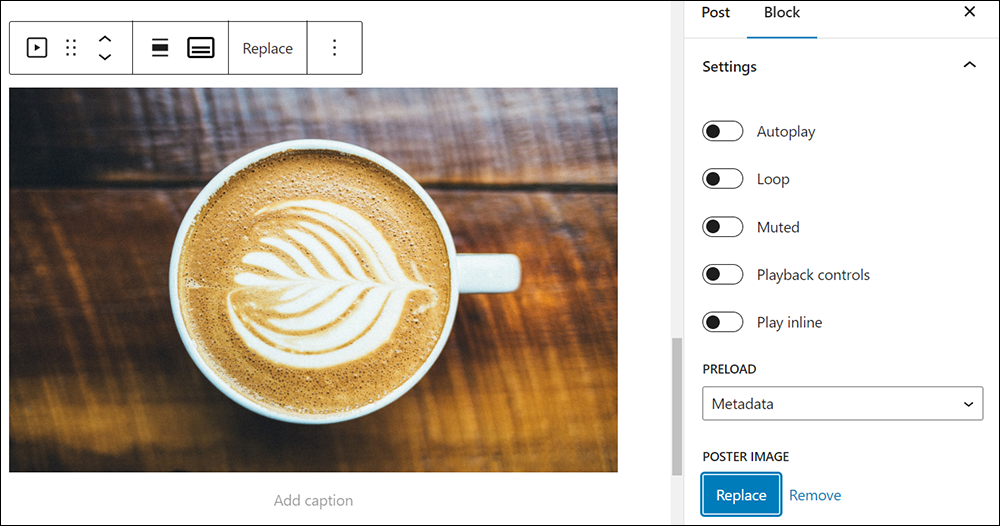
Click on Replace and select a new image or click on Remove to return to a video without a cover image.
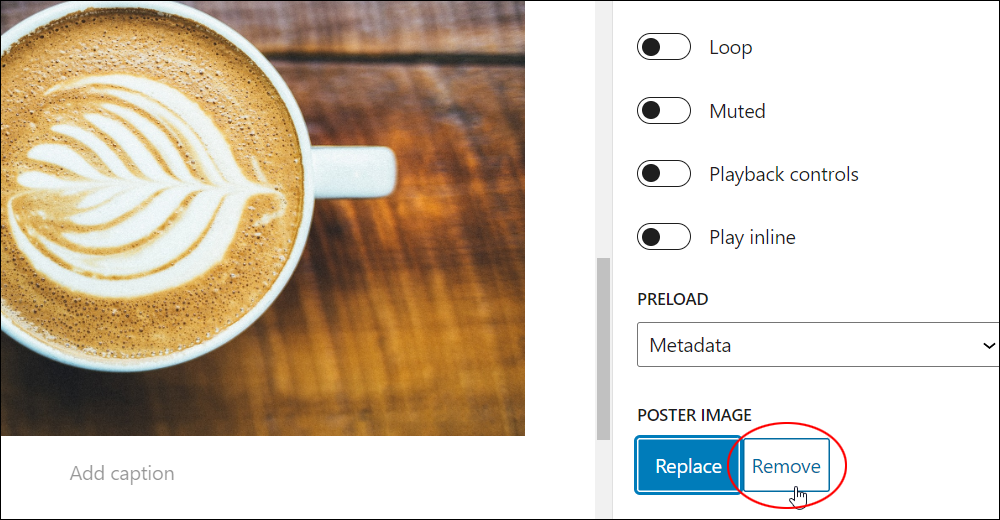
Remember to save your work after making changes to update your block’s settings.
WordPress Block Editor Video Media Settings – FAQs
Here are frequently asked questions about WordPress Block Editor Video Media settings:
How do I optimize video embedding in posts?
Use the Gutenberg block editor to add video blocks, which automatically optimize video settings for best performance and compatibility. Adjust settings like playback controls directly in the block options.
Is there a way to control video playback settings globally?
As of the current WordPress core features, global playback settings must be managed through plugins or theme customizations as the core does not provide these settings.
How do I add a video to a post or page using the Block Editor?
Use the Video block to add videos. You can upload a video directly from your computer or insert one from the media library.
What file formats are supported by the Video block?
The Video block supports various file formats, including .mp4, .mov, and .wmv. Ensure your video file is in a supported format for optimal compatibility.
Can I control autoplay and loop settings for videos?
Yes, in the Video block settings, you can enable autoplay and loop options, allowing your video to start automatically and/or repeat when finished.
Is there a way to add captions or subtitles to videos?
You can add captions or subtitles by uploading a .vtt file in the Video block settings. This file will display as text overlays on your video.
How can I ensure my videos are responsive on all devices?
The Video block automatically makes videos responsive. However, you can further adjust their appearance using CSS if needed for specific styling or responsive behavior.
What are some best practices for using the Video block effectively?
For best results, use videos of optimized size and quality to ensure fast loading times and good performance across all devices. Also, consider viewer engagement by keeping videos short and to the point.
***
Congratulations! Now you know how to adjust your block’s video settings.
Additional Block Settings
Click on a tutorial from the list below to learn about using other common block settings in the WordPress block editor.
***
For more tutorials in this series, go here:
- The WordPress Block Editor (Gutenberg)
- How To Use WordPress Blocks
- How To Use The WordPress Block Editing Toolbar
- How To Use The WordPress Block Editor Content Area
- How To Use The WordPress Block Editor Settings Section
- WordPress Block Editor: Block Settings
***
Updated: July 5th, 2024
